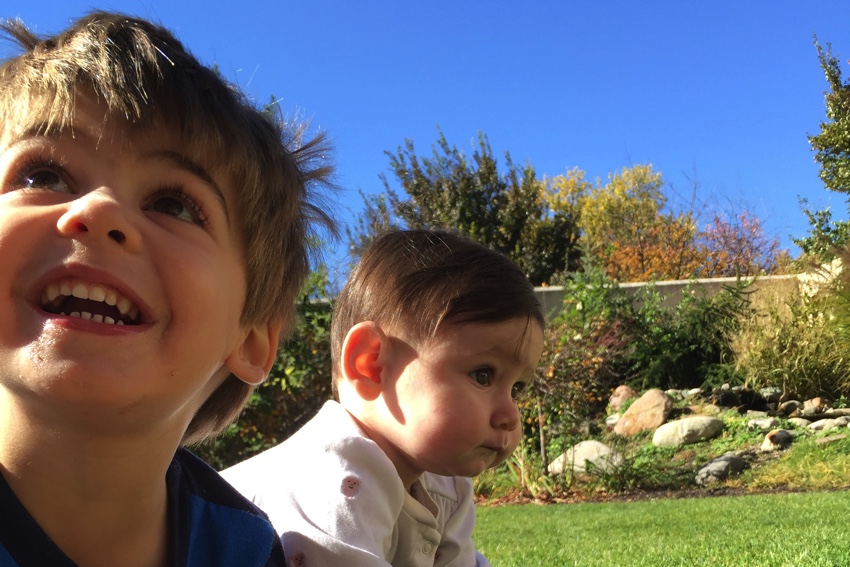Hitting the Road With Social Studies


Ah, summer. It’s right around the corner. Warm, sunny days and, for many people, a chance to take a break and recharge. As classrooms close for the season, this is a good time to suggest ways families can continue supporting their children’s learning over the summer.
Many families plan trips to visit relatives and friends in other towns, states, and even countries—what a meaningful way to explore social studies! Families planning extended trips often ask for help keeping children engaged and learning while on vacation. Consider preparing learning packets that include tips on how to talk to children about social studies in a meaningful way. Families will appreciate having developmentally appropriate ways to talk to children about people and how they live.
Explain to families that, for young children, direct, personal experiences are the most developmentally appropriate way to learn about how people live and the environments in which they live. You might wish to offer some of the following discussion starters and activity ideas to help them introduce social studies skills during family trips.
People and How They Live
- Who are the people in your family? What do they do?
Collect family photos in a small photo album; discuss each person’s name, where they live, and what they do. Share personal memories. “This is your Tía Yolanda. She lives near your grandmother in Michigan. She’s a dentist. She also builds birdhouses and has pet rabbits!” - How do you make and keep a friend?
Ask the child to write a letter or postcard to a friend; discuss what makes this friend special. - What are the jobs of people in our community?
As you travel, point out community workers. Ask children to notice special clothes or equipment in addition to the tasks performed: “Look at that man in the basket way up high. That basket is called a ‘cherry picker.’ He’s working on the roof of the auditorium. Can you see his bright green vest? Those help us see him when he’s way up high. You’re right! His hardhat is also bright green. That helps us see him and keeps his head protected.” - How do people use money to get goods and services?
Draw attention to how you use money to purchase gas, tickets, or food; ask children to help by holding money as you prepare for toll roads, etc. Discuss what they notice about the coins or bills: “Do you see the number 3 on the screen?
We need to pay three dollars to leave the parking garage. I’ll give you three dollars to hand to the attendant: one, two, three.” - What are some of the rules in your home, school, and community?
Discuss how you will be traveling and establish a clear set of expectations for traveling and visiting family and friends. Include children in developing rules to stay safe and be good guests and travelers. “Remember that Uncle Chris’s house has a lot of model airplanes. They are very delicate. That means that they can break very easily. They are just decoration and aren’t meant for playing. You may look at them and ask for permission to touch them, but only if Uncle Chris says it’s okay.”
People and the Environment
- How can we respect and care for our world?
Explain where to dispose of trash and point out recycling bins when they are available. Offer children the opportunity to reuse materials. As you travel, point out areas where the environment is respected and cared for. “When we finish drinking our water, we can reuse the bottle and fill it up at a water fountain. That way we don’t have to throw away the bottle. How can we reuse that plastic baggie from your lunch? Yes! If we wash it, we can put your cars in it to keep them safe.” - What do people do that is bad for the environment? How do those things affect all of us?
Point out examples of littering or pollution; discuss how these practices affect everyone. Ask whether there are things you can do as a family to help. “Oh, no. Can you see all the trash on the side of the road? That’s why we use this bag to hold our trash and then throw it away when we see a trash can. If everybody threw their trash out the window, all the roads would be dirty.”
People and the Past
- How do things and people change over time?
Collect family photos in a small photo album; discuss how people have changed or point out landmarks, such as a tree in the front yard, that have grown or changed over the years. “Look at how tiny you were in this picture! You were too little to open the door, and your grandpa’s beard was so short. Now you can reach the light switch on your tiptoes, and Papa’s beard is so long!” - How do we measure time?
On a smartphone or tablet device, explore clocks, calendars, or stopwatch features. Also, create a travel journal with children. At the end of each day, ask children to explain what they did and saw; record their answers on a calendar page or in a small notebook. “Let’s send a picture to your Nana every day of our trip so she knows what we did. Let’s see which picture we want to send her today. That’s a good one. What do you want to tell Nana about our trip to the caverns? I’ll write it in the message.” - How do we talk about time? How do we talk about the past, present, and future (e.g., use terms like “this morning,” “after lunch,” and “tomorrow”)?
At the beginning of each day, explain what children can expect, and intentionally use terms to refer to the past, present, and future during discussions and stories: “This morning, we are driving to a lake. First, we will put on life vests and take a ride in a canoe. Then we’ll have hotdogs for lunch. After lunch, your cousin wants to teach you how to fish, so you will need to listen to her instructions carefully. When the sun starts to go down, we will go back to Aunt Lisa’s house to sleep.”
Spaces and Geography
- Where do you live? What is your community like?
As you begin your trip, ask children to describe their community. What colors do they see in the landscape? What features do you see? When you arrive at your destination, ask children to describe the new environment. What is the same? What is different? “I see so many green trees here! What else is different than where we live? You’re right, there are hills here. What looks the same as where we live? Yes, we have that same store at home. This bridge is much taller than the bridge in our town. You’re right, the river is much wider than our little creek.” - How do people move from one place to another?
As you travel, point out the various ways that people move. Discuss how they are similar (cars, buses) and how they are different (trains, planes). “Oh, the buses here are painted blue and white. Ours are red and white. Have you ever seen a train in the middle of the city? Look at all the people inside!” - What is a map, and how can it help us?
Use road maps or electronic map devices to track your trip; point out upcoming landmarks or towns. “Let’s see, we’re on this highway right here. We are going in this direction. What is coming up on the map? Yes, that blue line! That tells us there is a river coming up. Let’s look out the window to see if we can spot the river.”
These questions and activities can help families enjoy developmentally appropriate and relatable discussions that help children learn about the world around them as they travel around town, around their state, or beyond. In addition, these discussions show families how abstract concepts such as history, geography, anthropology, sociology, civics, and economics can be explored meaningfully and personally.
There are so many wonderful family memories to be made during the summer, especially when children are engaged in interesting discussions. Those long hours in cars, planes, and trains often lead to the most marvelous discoveries—about the world, the people they see, and the children themselves.